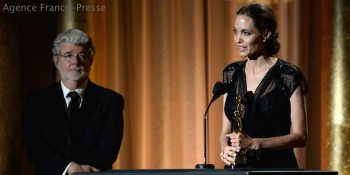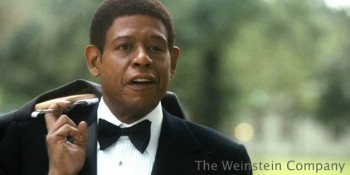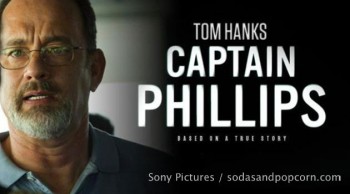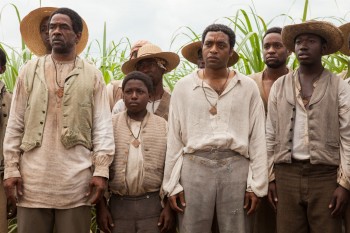Star Wars is a cultural phenomenon. Lightsabers, droids, Wookiees, and the Death Star are part of our everyday conversations. The Washington National Cathedral is adorned with a gargoyle of what Americans voted to be the epitome of evil: Darth Vader. And almost every single piece of media made in the last decade, in my experience, contains at least one reference to a Star Wars movie.
Star Wars is easily one of the most successful franchises in world history, yet it is so much more than that. The Star Wars films have inspired generations of young people to dream and to fight back against injustice. They taught us to realize our places as individuals, while remaining integral parts of a much larger universe. The original, historic chapter of the film series, however, is the ultimate example of Academy Award oversight.
Each year, when the Academy of Motion Picture Arts and Sciences awards excellence in film, only one movie can take home the top honor: Best Picture. It’s no secret that the Academy naturally favors a certain type of movie. And that is OK. As much as I love Superbad, it’s certainly not the type of movie that should be named Best Picture.
Often, a tremendous work of art is given the nod, much like this year’s 12 Years a Slave. Sometimes, however, the best film of the year gets overlooked in favor of a Hollywood vanity piece or a good movie that will be forgotten in a few years. But some types of movies — in certain genres or with certain characteristics — seem doomed, however good, right from the start.
Seeing that a few comedies have won Best Picture was actually quite jarring. In my time, every winner has been a period piece or a film that raises awareness to illness. These films are often heart-wrenching masterpieces that did not get the proper box office respect. But the Academy’s love affair with these true, or at least almost true, stories neglects original writing and punishes those who make creative films.
Blockbusters are typically big moneymakers. Recently, Nate Silver’s FiveThirtyEight.com identified 11 features that define a film as a blockbuster. Those 388 films are listed here, beginning with number 62, Jaws; how many Best Picture winners can you pick out? You won’t find many. Only three Best Picture winners have grossed over $200 million domestically (in the United States), and only six winners are in the top 200 domestically grossing films of all-time. Does the Academy have a natural aversion to blockbuster films?
Examine the Best Picture nominee list closely. Star Wars is one of only six science fiction films in eight decades to receive a Best Picture nomination. I understand that science fiction does not typically stand out for nuance or impressively written scripts. In a lot of instances, a science fiction film shouldn’t get the honor of Best Picture. Did The Avengers deserve to win Best Picture? Absolutely not. That doesn’t prevent it from being one of my all-time favorite movies. But I have a special affection for hero stories and movies that stretch my imagination.
Other blockbusters and science fiction films, however, are more than blow-em-up spectacles. Unfortunately, I think the prejudice against genre films has led to some egregious oversights from the Academy. Escapism can create movies just as compelling as reflection can. That brings us back to the original Star Wars film. This masterpiece was a victim of the Academy’s predisposition against films about the extraordinary, and was ultimately passed over for the top award. If Star Wars didn’t win in 1977, I have to ask: can a science fiction movie ever win Best Picture?
Star Wars defied conventional Academy practices by actually receiving a Best Picture nomination in the first place. The film even took home seven trophies, primarily for its innovative approach to filmmaking. But at the end of the night, the statuette for Best Picture was awarded to Woody Allen’s Annie Hall. Don’t get me wrong. Annie Hall is a tremendous film. The movie is hilarious from beginning to end and holds up even after 37 years. It’s a rare older movie that feels like it could have been made today. And it defies awards expectations of its own as a comedy, which is so rare to see honored with an Oscar. It is also not nearly as innovative as Star Wars.
Consider: which movie has made a greater impact on world culture, Annie Hall or Star Wars? I challenge you to name any movie that has made a larger impact than Star Wars. But again, I understand if you disagree about cultural relevance being a factor in naming Best Picture. That is also an impact that cannot be fully measured for many years after a film’s release. So let’s dissect the iconic film for its specific merits.
In my view, a movie should be graded on plot, characters, acting, world building, creativity, innovation, subject matter, and historical relevance. Annie Hall gets high marks for several of these categories, while Star Wars is superior to most films in nearly every one.
Star Wars is, perhaps, the most technically innovative movie of all time. Sure, it doesn’t look like Avatar, but the original movie was made before computers were even a factor in filmmaking. In fact, the production of Star Wars helped to create the computer generated imagery that made movies like Gravity
and The Avengers possible.
George Lucas, with very little money available to make his vision come to life, managed to create an entire universe of societies, spacecraft, and sentient beings of peculiar appearance, using only models and costumes. Lucas created the Wookiee, the Jawa, dozens of background alien species, and two legendary droids named C-3PO and R2-D2 without any help from the CGI that would eventually become synonymous with Lucasfilm and its spinoff company, Pixar.
However, these technical leaps don’t necessarily make a film worthy of Best Picture. If they did, Gravity would have been the 2013 winner. Thankfully, it wasn’t, but that’s because the story of Gravity, while interesting, was shallow and lacked any kind of memorable character. That might also be one of the potential weaknesses of Star Wars. Its characters may not be as complex as something from Shakespeare — but they are just as recognizable, if not more so. Are there any movie characters more well known than Luke, Han, Leia, Vader, or the droids?
Again, popularity does not mean a film is necessarily good. I can admit that Obi-Wan never made me cry like Oskar Schindler, and Luke isn’t perhaps as inspiring as Abraham Lincoln. But these characters live in a galaxy different from our own, and yet they still manage to make us feel as though we have joined them on their journey.
Luke Skywalker is offered as a stand-in for the viewer. He is a kid from a simple place looking to leave his world behind him when an unexpected turn of events leads him to the stars. He is motivated by a desire to accomplish something, and he believes the Galactic Empire needs to be brought down. He is a man who longs for his father, aspiring to be like him without even knowing who he was. It is a story familiar to every boy and girl who feels they are destined for greater things.
Luke has to come into his own while learning from his mentor, Ben Kenobi. Ben becomes a surrogate father — not just to Luke, but to those of us who want to believe we can achieve greatness. Ben’s climactic fight with his former protege, Darth Vader, ends with the mentor’s sacrifice before the eyes of his apprentice. Luke then has to rise up and become the new hero the Galaxy needs. It is the advice of his mentor, along with the assistance of his new friend, the roguish Han Solo, plus his newfound faith in his own ability and the world around him that leads Luke to an immeasurable victory as he brings down the planet-destroying Death Star.
Sure, Luke isn’t facing disease or dealing with being a slave, but he’s a young man fighting a literal galaxy of problems, dealing with his inadequacies and yearning to know about his parents and find himself. Perhaps the acting isn’t on par with Daniel Day-Lewis or Gary Oldman (though Oldman had been rumored to be joining the cast of the next Star Wars flick), but there is never a scene in the original movie that takes the audience out of the moment through bad acting or unbelievable sets. What Lucas and the actors did was create an unbelievable world and make it believable. That type of talent should be honored.
The Star Wars films aren’t overtly about the human condition and they don’t raise awareness to some controversial topic, but they do follow a time-honored story structure, one that has been imitated many times since and has been honored in other, non-sci-fi films. Star Wars is about the hero’s journey, a narrative technique that is rooted in ancient mythology.
As explained by mythologist Joseph Campbell, the hero’s journey is the arc that follows a hero from the common to the extraordinary. This hero is often an everyman on an unlikely quest, an epic campaign to overcome the greatest odds. The hero will grow as a person either for surviving the trek or for dying a legend. These stories also often follow the friends of the protagonist as they come into their own and help the hero defeat the great evil. The hero’s journey may not involve human suffering in a way we can always relate to, but that doesn’t make a film any less qualified to be considered the Best Picture of the year.
Perhaps you believe the Best Picture winner should speak to something beyond what appears on the screen. As I said, great movies must have compelling subject matter. A Best Picture winner should teach a lesson and make us think about how we live our lives. Star Wars, with its philosophical underpinnings and questions on war and proper government, accomplishes all of this in spades.
Star Wars is packed with philosophy. Questions of destiny and the great interconnectedness of all life fill the movie from beginning to end. The Force, introduced in the first Star Wars movie, took traits from religions and philosophies across the globe to create a mystical, mythical energy force that binds us and guides us. Fans of Star Wars were inspired by Kenobi to listen to our surroundings and become attuned to the space in which we live. And the Force is just the glue that holds together the enormous world built by Lucas and his crew.
No movie was as thorough as Star Wars in creating an entire universe. Many lines in the 1977 film were carefully crafted to construct a history of this galaxy so different from our own. When speaking to Obi-Wan, Luke casually mentions “The Clone Wars” years before this event would be expounded upon. Obi-Wan’s lines about Luke’s father display an uncertainty that takes on new meaning when the viewer learns the truth in the sequel. What other movie has created lines so rich in content that books could be written for years expanding on just several hours of film?
If a movie is funny, dramatic, original, compelling, and innovative, what else does it take to be given the honor of being called Best Picture? By denying the statue to Star Wars, was the Academy simply making a pretentious statement against a movie that requires such suspension of disbelief? What is the point of movies if not to create new worlds and tell stories that can’t really happen? As much as I am a fan of realism in movies, escapism should not be so marginalized.
Lucas and the folks at Lucasfilm created the world’s most enduring movie, lasting across generations of fans and penetrating our culture in every way. And even if you take away all that has happened since the 1977 release, what you are left with is still a modern myth, a compelling narrative of trial and loss, a rich plethora of characters who take us on a heroic journey to a galaxy far, far away.
Star Wars was the most innovative and influential film of the 20th century. It was unjustly denied its due respect from the Academy by not receiving the award for being the Best Picture of 1977.




